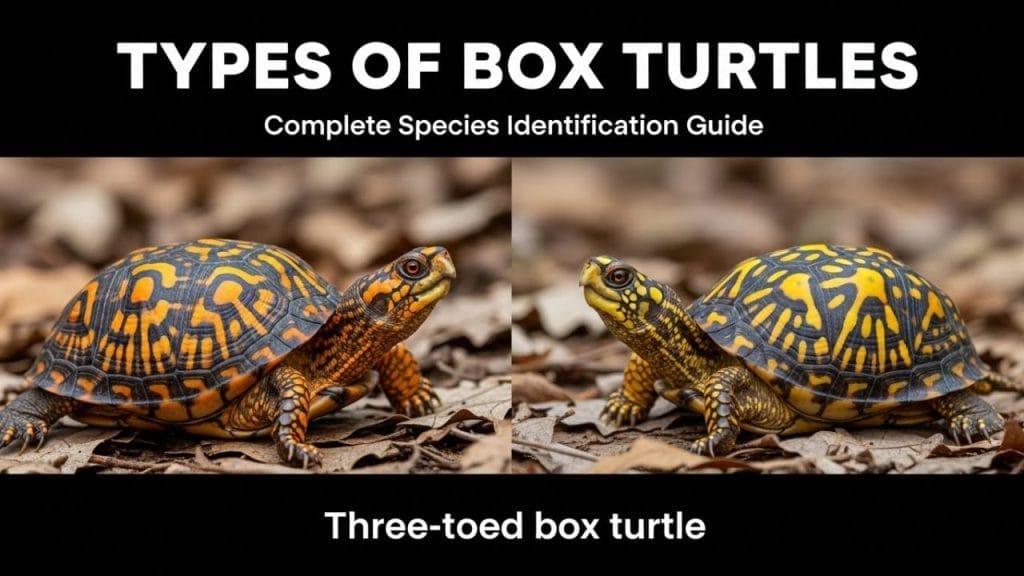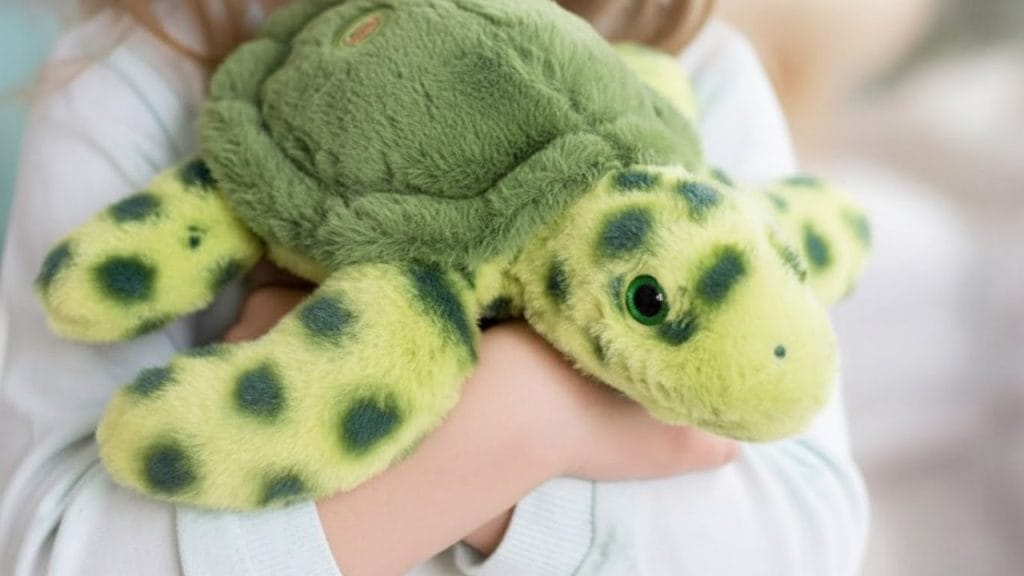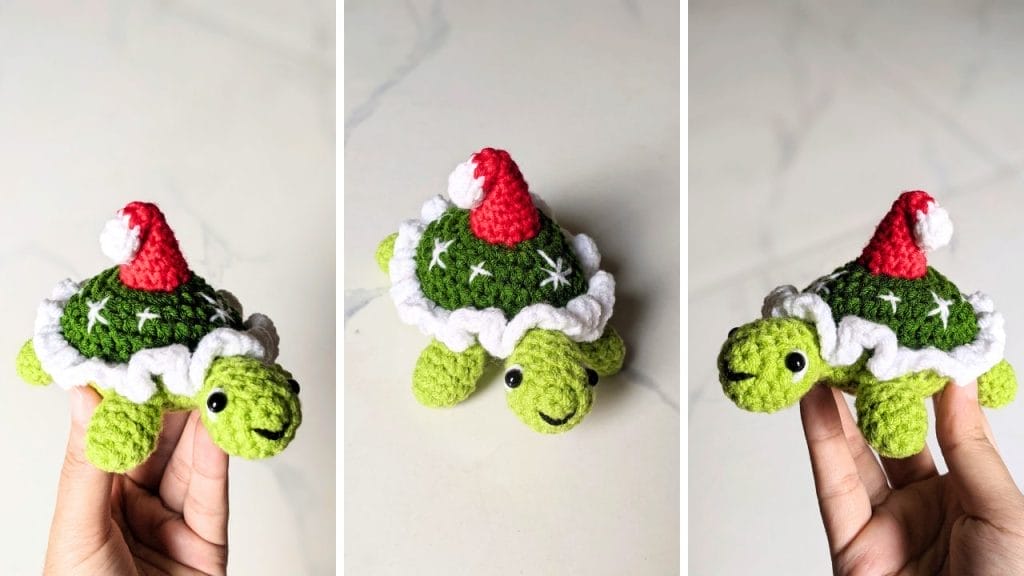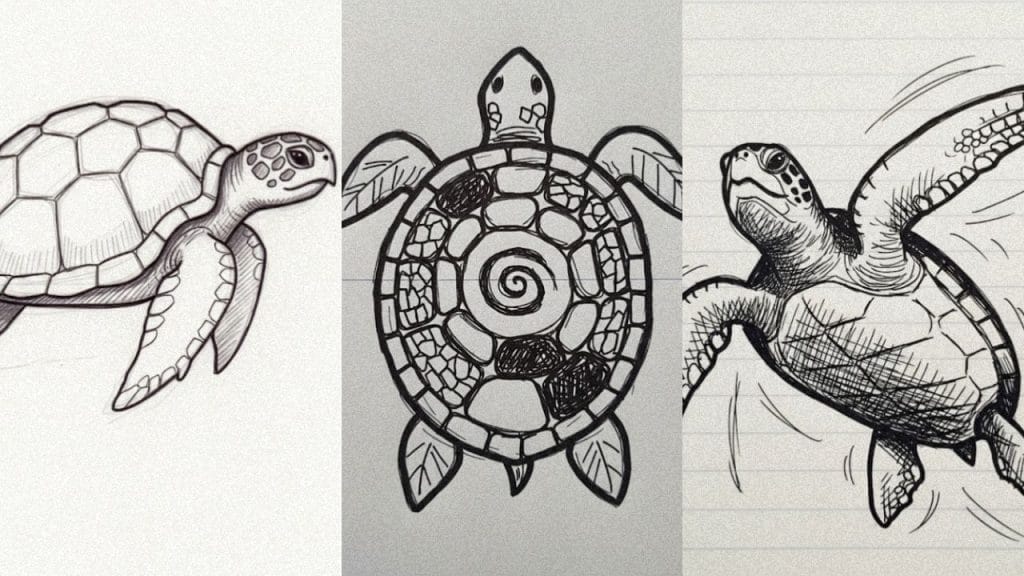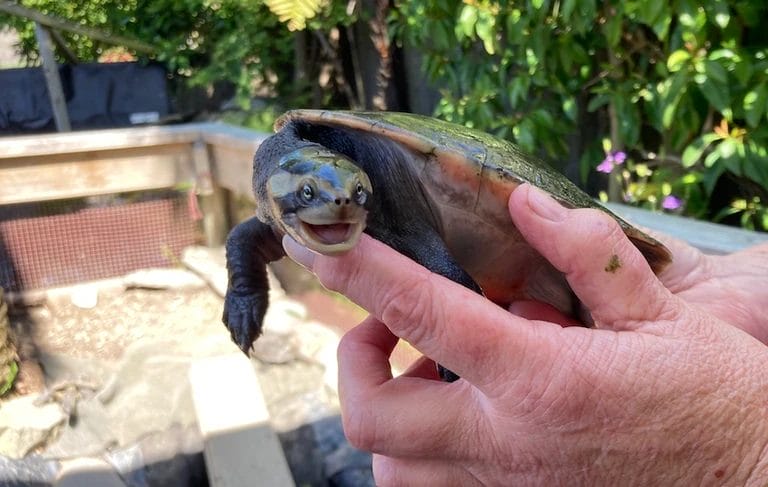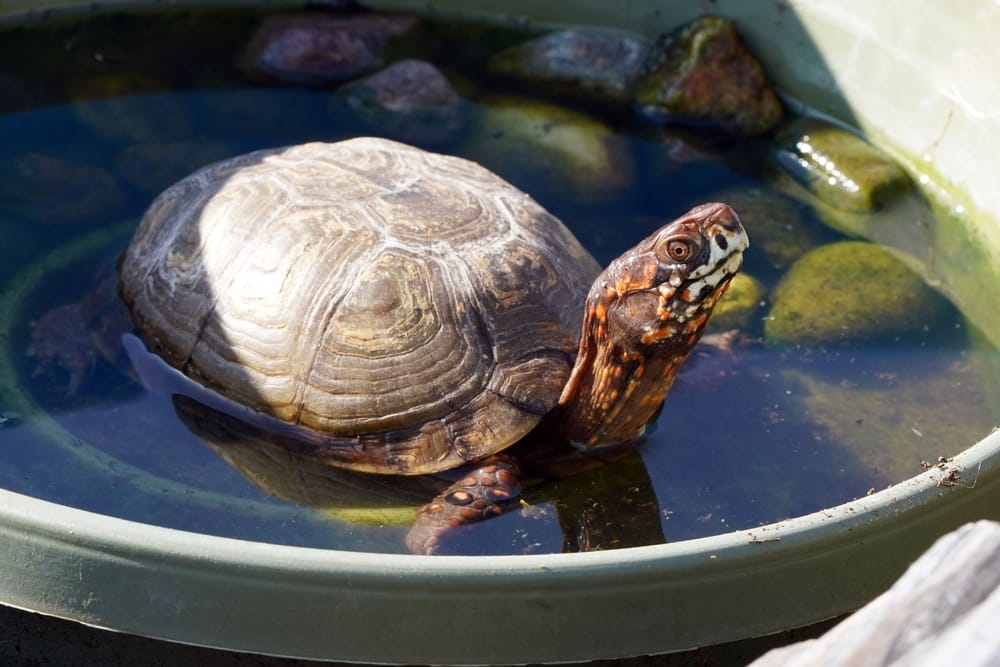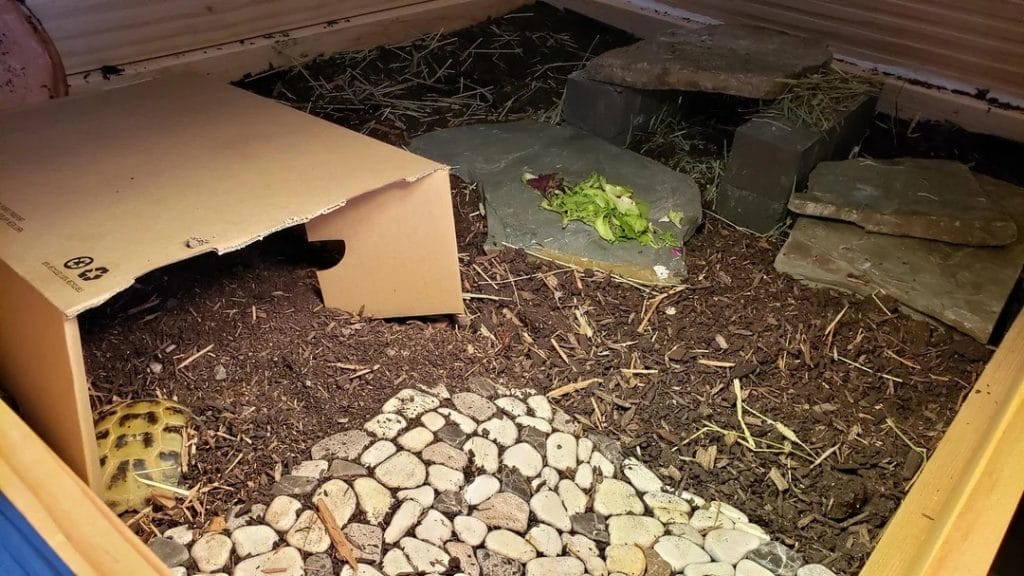How To Properly Take Care of Map Turtles?
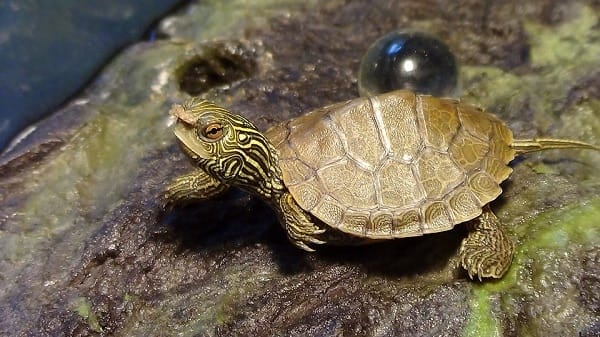
This post was created with help from AI tools and carefully reviewed by a human (Muntaseer Rahman). For more on how we use AI on this site, check out our Editorial Policy.
So you just got a map turtle or you’re thinking about it, and now you’re staring at your new shelled friend wondering “what have I gotten myself into?”
Don’t worry.
I’ve been down this road, and I’m going to walk you through everything you need to know without making it sound like a boring science textbook.
Know Your Map Turtle Species First
Here’s the thing everyone misses: not all map turtles are exactly the same size.
There are 14 different subspecies of map turtles, and some stay pretty small while others get massive. Mississippi map turtles? The females can hit 10-12 inches. Northern map turtles? A bit smaller but still need serious space.
Before you buy any tank or set up anything, figure out which species you have. It’ll save you from buying a tank twice.
Tank Size: Bigger Than You Think
Let me hit you with the math that pet stores conveniently forget to mention.
You need at least 10 gallons of water for every inch of your turtle’s adult length.
So if you’ve got a female Mississippi map turtle that’ll grow to 10 inches? That’s a 100-gallon minimum. Males stay smaller at around 5-6 inches, so they can get by with 65 gallons.
And before you say “but my turtle is tiny right now” – yeah, they all start small. You can start a baby in a 20-40 gallon tank, but you’re going to upgrade eventually. Save yourself the trouble and just go big from the start.

Tank Size Quick Reference
| Map Turtle Species | Male Tank Size | Female Tank Size |
|---|---|---|
| Mississippi Map | 65 gallons | 100-125 gallons |
| Texas Map | 65 gallons | 75 gallons |
| False Map | 65 gallons | 100-125 gallons |
| Ouachita Map | 75 gallons | 125 gallons |
| Northern Map | 100 gallons | 125 gallons |
Map turtles come from rivers – they’re not pond turtles. They’re built for swimming, and they need DEEP water once they’re past the baby stage.
This Hilarious Turtle Book Might Know Your Pet Better Than You Do
Let’s be real—most turtle care guides feel like reading a textbook written by a sleep-deprived zookeeper.
This one’s not that.
Told from the snarky point of view of a grumpy, judgmental turtle, 21 Turtle Truths You’ll Never Read in a Care Guide is packed with sarcasm, sass, and surprisingly useful insights.
And hey—you don’t have to commit to the whole thing just yet.
Grab 2 free truths from the ebook and get a taste of what your turtle really thinks about your setup, your food choices, and that weird plastic palm tree.
It’s funny, it’s honest, and if you’ve ever owned a turtle who glares at you like you’re the problem—you’ll feel seen.
Water Depth Matters
Baby turtles? Keep water shallow – about 4-6 inches deep or the length of your index finger.
Once they’re eating well and swimming confidently? Fill that tank up. Adult map turtles want water that’s 16+ inches deep. They’re strong swimmers and actually prefer deeper water where they can really move.
The Basking Station
Map turtles are semi-aquatic, which is a fancy way of saying they split their time between swimming and sunbathing.
They NEED a dry basking area where they can completely get out of the water. No shortcuts here.
You can buy a floating dock or make one yourself with smooth rocks, driftwood, or even slate. Just make sure:
- It’s stable (won’t tip)
- Has a ramp so they can climb up easily
- It’s positioned under the heat and UV lights
- There are no sharp edges
Without proper basking, your turtle can develop shell rot and other nasty diseases. Not fun for anyone.
Water Quality: This Is Make or Break
Here’s where a lot of new turtle owners mess up.
Map turtles are extremely sensitive to water quality. They’re from clear, fast-flowing rivers, remember? So dirty, stagnant water? That’s basically poison to them.
The Ammonia Problem
Your turtle poops in its water. That waste produces ammonia, and here’s what you need to know: ammonia is toxic to turtles.
Recent studies show ammonia exposure causes:
- Eye irritation and swelling
- Intestinal damage
- Weakened immune system
- Respiratory problems
- Liver damage
This isn’t a “maybe” thing. It’s backed by science. So water filtration isn’t optional – it’s life or death.

Get a GOOD Filter
You need a canister filter rated for at least 2x your tank’s water capacity. So if you have a 75-gallon tank? Get a filter rated for 150 gallons.
Map turtles are messy. Like, really messy. The filter does more than just clean – it creates water flow, which these river turtles actually love.
Chlorine and Chloramine
Tap water has chlorine or chloramine in it, which irritates turtle eyes and kills the beneficial bacteria in your filter.
Always treat your water with a dechlorinator before adding it to the tank. Let the water sit for 24-48 hours OR use a commercial dechlorinator product.
Water Change Schedule
- 25% water change weekly if you have multiple turtles or a smaller tank
- 50% water change every 2-3 weeks for larger setups with good filtration
Use a Python system to make this easier – trust me, you’ll thank yourself later.
Temperature: Three Different Zones
Map turtles can’t regulate their own body temperature. They depend on you to set up the right zones.
Water Temperature
- Juveniles: 78-80°F
- Adults: 72-76°F
Use a submersible aquarium heater. Go with titanium or shatterproof models – avoid glass heaters because map turtles have hard shells and can break them. Nobody wants a fried turtle.

Basking Spot Temperature
- 85-95°F for most species
- Some like it hotter – up to 100-110°F
Use halogen flood bulbs clustered together. Avoid ceramic heat emitters or colored bulbs – they don’t work as well.
Air Temperature
- Mid-70s to 80s
This is basically room temperature for most people.
Get two thermometers – one for water, one for the basking area. Check them daily.
Lighting: UV Is Non-Negotiable
This is where a lot of people try to cheap out, and then their turtle gets sick.
Map turtles need UVB light to produce Vitamin D3, which helps them absorb calcium. Without it, they develop Metabolic Bone Disease – soft shells, deformed bones, and eventually death.

UVB Light Setup
Get a T5 HO UVB bulb (10.0 or similar) that’s at least half the length of your tank.
Mount it in a reflective fixture like an Arcadia ProT5.
Position it 8-14 inches above the basking platform depending on whether there’s mesh in the way.
Replace the bulb every 12 months even if it still looks like it’s working. UV output degrades over time.
Lighting Schedule
- Summer: 14 hours on, 10 hours off
- Winter: 10 hours on, 14 hours off
If your turtle is in an outdoor pond during warm months, natural sunlight handles everything and you don’t need supplemental lighting.
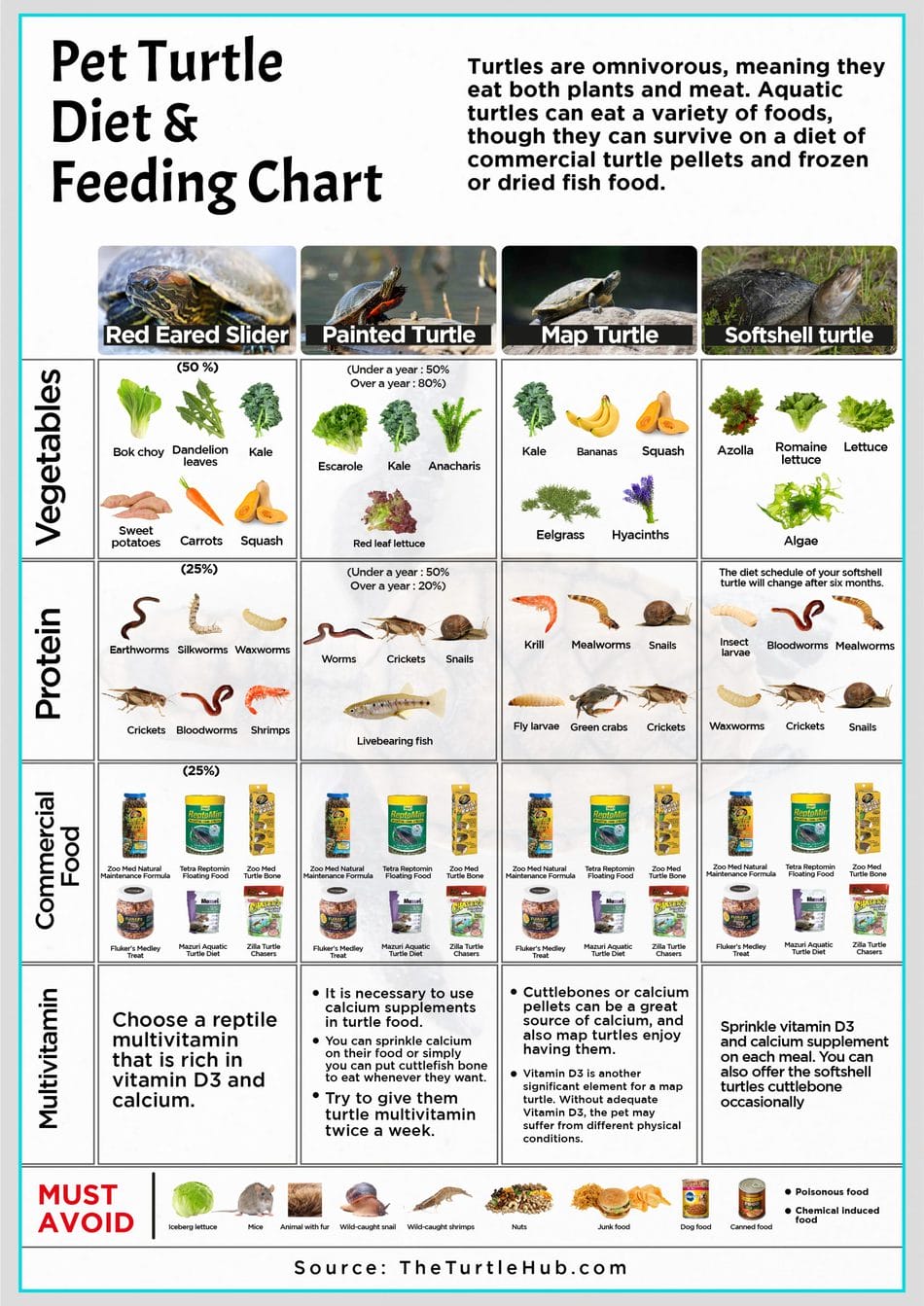
Diet: They’re Picky Carnivores (Mostly)
Map turtles are technically omnivores, but juveniles act more like carnivores.
Here’s how their diet changes:
For Babies and Juveniles
Feed daily with high-protein foods:
- Commercial turtle pellets (Mazuri, ReptoMin, Zoo Med)
- Feeder fish
- Crickets
- Earthworms
- Bloodworms
- Krill
Add some veggies but don’t be surprised if they ignore them at first.
For Adults
Feed every other day with a more balanced diet:
- Commercial pellets
- Snails and mollusks (their favorite!)
- Crayfish
- Shrimp
- Leafy greens (romaine, kale, dandelions)
- Aquatic plants (water lettuce, water hyacinth)
Adult females develop massive jaws built for crushing snail shells. It’s actually pretty cool to watch.
The 5-Minute Rule
Feed as much as your turtle can eat in 5 minutes, then remove leftovers.
Overfeeding causes fast growth, which leads to pyramiding (bumpy, deformed shells).
Supplements
Sprinkle calcium powder with D3 on their food a few times a week. You can also leave a cuttlebone in the tank for them to nibble.
Foods to AVOID
Never feed:
- Fruits (too much sugar)
- Iceberg lettuce (zero nutrition)
- Fireflies (toxic)
- Wild-caught snails (parasites)
- Dog or cat food
- Processed human food
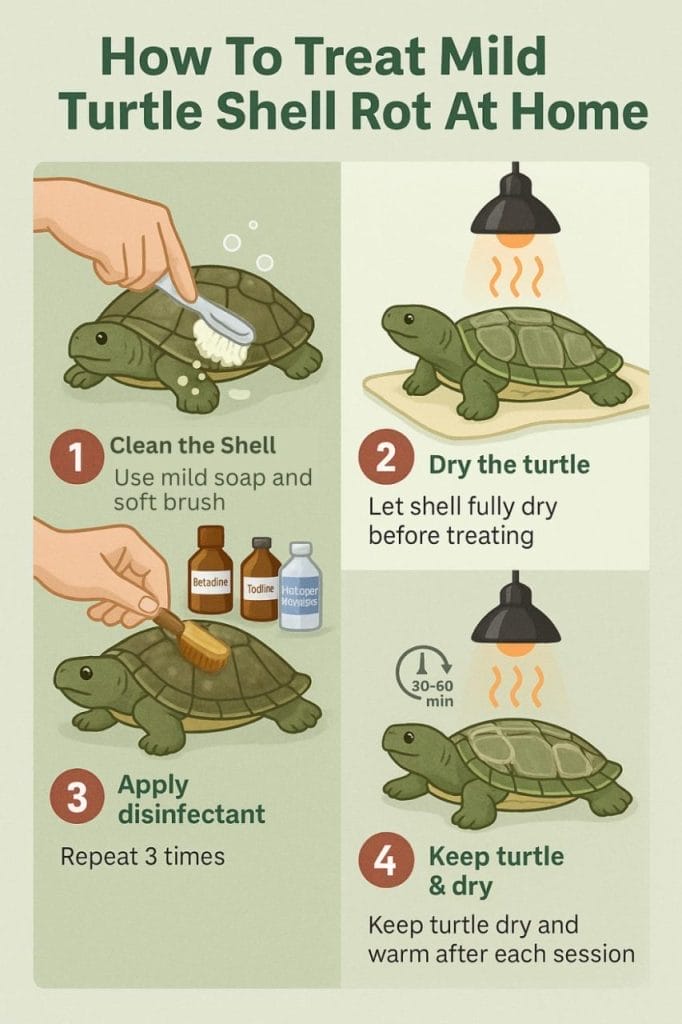
Common Health Problems
Even with perfect care, turtles can get sick. Here’s what to watch for:
Shell Rot
Brown or white spots on the shell, soft areas, or foul smell.
Cause: Bacterial or fungal infection from dirty water or shell damage.
Fix: Clean water immediately. Apply antibiotic ointment to affected areas. See a vet if it’s bad.
Swollen Eyes
Red, puffy, or closed eyes.
Cause: Vitamin A deficiency, dirty water, or chlorine irritation.
Fix: Improve water quality, add vitamin supplements, and see a vet.
Soft Shell (Metabolic Bone Disease)
Shell feels rubbery, turtle seems weak.
Cause: No UVB light or calcium deficiency.
Fix: Better UVB setup, calcium supplements, vet visit.

Respiratory Infection
Wheezing, bubbles from nose, swimming lopsided, open-mouth breathing.
Cause: Water too cold or bacterial infection.
Fix: Raise water temp, see a vet for antibiotics.
Pyramiding
Shell grows in tall bumps instead of smooth.
Cause: Too much protein, too fast growth.
Fix: Balance the diet better. Can’t be reversed but can be stopped.
The Real Cost
Let’s talk money because nobody else will.
For a full adult setup you’re looking at:
| Item | Approximate Cost |
|---|---|
| 100-125 gallon tank | $400-700 |
| Canister filter | $100-200 |
| Water heater | $40-80 |
| UVB light setup | $80-150 |
| Basking platform | $30-60 |
| Substrate/decorations | $30-50 |
| Thermometers | $15-25 |
| Food (monthly) | $20-40 |
Total startup: $700-1,300
And that’s not counting the turtle itself or vet bills.
I’m not trying to scare you off – I’m just being real. Map turtles aren’t “cheap starter pets.”
Outdoor Ponds: The Dream Setup
If you have the space and climate, outdoor ponds are amazing for map turtles.
They get natural sunlight (free UVB!), tons of swimming room, and access to wild foods like insects and aquatic plants.
Requirements:
- Secure fencing (raccoons LOVE turtle eggs)
- Deep enough they won’t freeze solid in winter
- Accessible basking areas
- Good filtration still needed
Most keepers bring their turtles inside during winter unless they’re native to your area.
Can They Live Together?
Short answer: it’s complicated.
Males can be aggressive toward each other. Two males in one tank usually ends badly.
If you want multiple turtles:
- Keep 2-5 females per 1 male
- Provide multiple basking spots
- Increase tank size by 50% for each additional turtle
- Feed separately to avoid competition
Honestly? One turtle is way easier.

Handling Your Turtle
Here’s the truth: map turtles don’t really like being held.
They’re not dogs. They get stressed when you pick them up, and stressed turtles can bite (and they have strong jaws).
Keep handling to a minimum – only when necessary for tank cleaning or vet visits.
If you want to interact, try hand-feeding with tongs. They’ll learn to recognize you at feeding time.
Signs Your Turtle Is Sick
Trust your gut, but watch for:
- Loss of appetite for more than a few days
- Lethargic behavior or sleeping way more than normal
- Nasal discharge or bubbles
- Swimming crooked or floating oddly
- Weight loss you can see
- Shell damage or soft spots
When in doubt, see a reptile vet. Regular checkups are smart too.
Breeding (For Advanced Keepers)
I’m not going to deep-dive this because beginners shouldn’t be breeding turtles, but here’s the basics:
- Females need 10-14 years to reach sexual maturity
- Males mature at 4-6 years
- They need hibernation to trigger breeding behavior
- Females need a nesting area to lay eggs
- Incubation takes 60+ days
- Temperature determines sex of hatchlings
There are already tons of turtles needing homes. Only breed if you have a plan for every hatchling.
Final Real Talk
Map turtles can live 20-30+ years with proper care.
That’s longer than most people keep their cars. Longer than some marriages.
Before you get one, ask yourself:
- Can I afford a $700+ setup?
- Do I have space for a 100+ gallon tank?
- Can I commit to weekly maintenance for decades?
- Am I okay with a pet I mostly watch instead of cuddle?
If you answered “yes” to all of that? Map turtles are awesome pets. They’re active, beautiful, and fascinating to watch.
They’re just not low-maintenance goldfish.
Do it right, and you’ll have an incredible companion for years. Do it wrong, and you’ll have a sick, stressed turtle and a guilty conscience.
The choice is yours.

About Author
Muntaseer Rahman started keeping pet turtles back in 2013. He also owns the largest Turtle & Tortoise Facebook community in Bangladesh. These days he is mostly active on Facebook.


